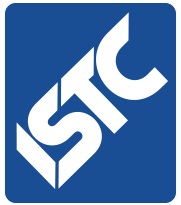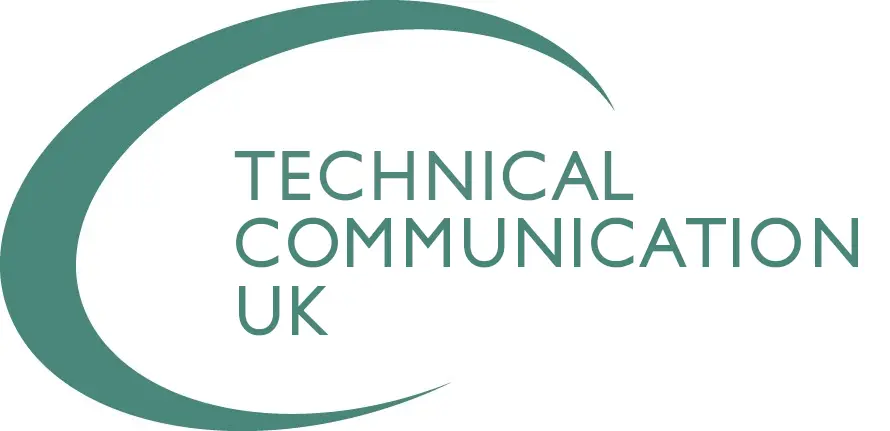Below is the current timetable for TCUK25. The event is spread across 3 presentation rooms, with a separate timetable given for Day 1, the Celebration Dinner, and Day 2 of the conference. Each can be shown in a printer-friendly format by clicking on the button at the top-right of the timetable. Alternatively, you may download the timetable as an ICS file (Last update: 7 November) for importing into digital calendars.
Please note: Some adjustments may need to be made to the timetable between now and the conference. Last updated 14 November.
TCUK25 - Day 1 (Monday)
Register for TCUK25 at the desk then head through into the conference area. Don't forget to input your car registration for free parking.
The TCUK25 team will kick off the day with a welcome for everyone and any announcements.
Keynote presentation: Surviving the savanna: Adapting to an evolving career landscape

What lies ahead for technical communication as a profession?
This is not the first time we’ve seen a large shift in the industry, though this shift feels more seismic than previous ones. There are no shortage of conflicting predictions. Some are of doom and gloom; others predict business as usual. All of us are keeping a careful watch for the fissures in the business landscape.
Rahel Bailie brings her decades of workforce experience to the stage with survival strategies of which even Bear Grylls would approve.
About Rahel Anne Bailie
Rahel Anne Bailie is the Content Solutions Director at Altuent, an Ireland-based agency focusing on elevating enterprise knowledge through structured content, AI content readiness, and user adoption. She is well-known in the content industry, with books, awards, and accolades to her name. More importantly, she is passionate about content and has spent over two decades helping companies make sense of their operations, taking on increasingly-complex problems in the areas of content strategy, content operations, knowledge management, creative operations, and related areas where she makes order from content chaos.
Before you arrive
You don’t need to prepare anything for this session.
Themes
Trends in technical communication
Core activities
Good for
Starting off with a view of where we've been, where we are, and where we're headed.
Take a moment to stretch your legs, use the facilities, or grab a drink or snack in the refreshments area.
Workshop: How to train your Dragon (chatbot)
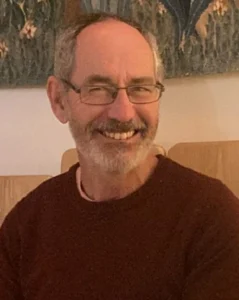
In this practical session, Warren will demonstrate and take the audience through the practical steps of how to implement their own AI Chatbot, for use on a website, or as a support for end users of a company’s technical documentation. The workshop will leverage insights and experience his team has gained in implementing their own AI chatbot.
The session will cover:
- Introduction to the use of Generative AI chatbots as part of a content strategy
- Select an AI chatbot tool
- Training the AI chatbot on your content
- Customising the appearance and behaviour of the chatbot
- Rolling out the chatbot/embedding within a website
- Using chatbot analytics as a tool to track user engagement with your content
- Customising your content and the chatbot rules to improve the accuracy and effectiveness of the chatbot
- Using your own chatbot as a tool to support content writing
- Warnings: what can go wrong if the chatbot is not properly set up and configured. Some case study examples for discussion
- Q&A
Please note: During the workshop, delegates will sign up for a CustomGPT account using their company email*. Delegates can cancel their CustomGPT account after the workshop, so they aren’t billed after the 7-day trial period.
About Warren Singer
I have been a technical communicator for the last 30 years. During that period I have witnessed the astonishing rate of technological innovation and change, and as a technical communicator been at the cutting edge of some of the technology that has shaped our world. For 13 years I was director of Cambridge Technical Communicators Ltd, a small Cambridge based technical communication agency. Five years ago I switched to a permanent role as manager of a small technical publications team in a rapidly growing organisation. I have also been an ISTC Council leader, responsible for CPD, Resources and Publications.
Before you arrive
Attendees will need:
- A laptop that can connect to wifi
- A company email address or email address linked to a company domain*
* If you don’t have access to an email account linked to a company domain and would like one set up, please contact warren@technical-communicators.com.
Themes
Real-life projects
AI in tech comms
Good for
Those looking to learn from others' experience with AI tools.
Take time to refuel and chat with other attendees.
Who can attend the AGM?
All members of the ISTC.
What happens at the AGM?
Corporate members (MISTC, FISTC) vote to:
- Accept the minutes of last year's AGM.
- Re-elect existing Council members standing again.
- Elect new Council members.
- Re-appoint the auditors.
- Accept financial report.
What doesn't happen at the AGM?
We don't nag members, give out tasks, or recruit volunteers or new Council members at the AGM.
We don't take questions or discuss floor motions; discussion points for this year's AGM had to be submitted by 11th August.
If time allows after the AGM closes, we may accept questions from the floor. These will not be minuted as part of the AGM, but will be recorded in case a Council discussion is needed.
Why it's important to attend the AGM
The AGM is a legally binding condition of our Constitution.
To hold an AGM we need a quorum, which is a minimum attendance level.
It's not exciting but it is necessary, please do attend.
Presentation: Crowdsourcing insights into complex documentation: Highly useful and productive documentation feedback from Slack
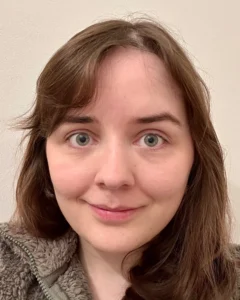
CICS Transaction Server is a major mainframe product for IBM with a rich 55-year history, and, as it is today, over 100,000 pages of documentation.
Working on the documentation for CICS TS means maintaining widely used documentation that is not only, in some places, several decades old but also continues to grow with each release cycle. With its ever-increasing size and complexity, it can be easy as writers to miss items that need updating, correcting, or transforming to provide better value.
Our approach was simple. Host an internal documentation feedback channel in the main messaging tool, Slack, where colleagues in support and development can share issues, corrects, and suggestions for the CICS TS documentation. The issues raised are then examined in Jupyter notebooks, where we can examine the bigger picture and determine any patterns for the types of issues coming through – highlighting possible problem areas in the documentation, as well as revealing future focus areas or educational opportunities.
By crowdsourcing feedback from those either directly working with the documentation or resolving client problems, we can continue to improve the content we provide, and in the process, not only strengthen our skills as individuals but ultimately build trust with our customers.
In this presentation, we will discuss how this is achieved, the data we gather from it and what that can tell us about our documentation, where we can plan to take it next and how you can utilise a similar approach for your own benefit.
About Beth Morgan
Beth is a Technical Content developer at IBM, Hursley. She works primarily on the documentation for CICS TS, one of IBM’s major software products. As well as being responsible for the documentation for one of the core areas within CICS TS, she is the lead for the CICS TS docs feedback Slack channel, team accessibility focal, and acted as delivery lead for the documentation of the latest CICS TS release.
Beyond her main role, Beth is one of the new co-leads for the IBM Z Content Design & Development guild, working to bring together the hundreds of technical writers in the Z Content community for skill growth, opportunities for eminence, and building stronger connections.
Outside of work she enjoys reading and playing video games, switches between various crafty hobbies (sewing, knitting, painting – take your pick!), dabbles in photography, and partakes in regency dancing.
Before you arrive
You don’t need to prepare anything for this session.
Themes
Core activities
Content strategy
Real-life projects
User testing and research
Good for
Anyone who writes documentation with internal users.
Presentation: The philosophy of technical communication: how does your worldview frame your practice?
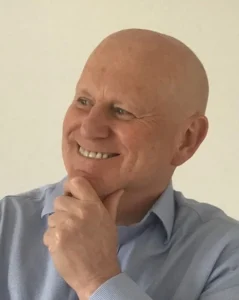
Do you ever think about the philosophy of technical communication? When I did a Google search on this subject, its AI overview said: “The philosophy of technical communication centres on the effective and efficient transfer of specialized information to a specific audience to achieve a practical purpose”. This is similar to the ISTC’s statement about the “purpose of our profession”. But “purpose” is not really about the underlying philosophy. It may well be a useful guiding principle but it does not engage with the ways of thinking that frame technical communication.
In this presentation, I want to explore the theories of knowledge (epistemology) that underpin the discipline. These theories are perhaps not always explicit. For example, is technical communication a neutral conduit for transferring facts to users (a view rooted in the Shannon and Weaver transmission model and philosophical realism). Or should we be thinking more in terms of rhetoric and reception theory, which sees meaning as socially constructed and makes any kind of communication more problematic? As a provocation perhaps, I suggest that John Carroll’s Minimalism sits more in the constructivist/rhetorical space than realist/transmission perspective.
There are no specific recommendations in this presentation. Rather, using a mix of theory and real-world examples, I hope to foster reflection, critical thinking, and philosophical exploration in a way that may well impact directly on your own practice. It might also provide pointers for future career development.
About Malcolm Cawood
Once upon a time, I wanted to be an academic: I began post-graduate research into political drama – a pursuit that took me into the byways of rhetoric, semiotics, and how people form beliefs and knowledge (epistemology). I never wrote the thesis and drifted into local government administration where I spent the next eight years. Following voluntary redundancy, I completed an MSc in Human Computer Interaction and Technical Communication, where, much to my surprise, many of the underlying ideas from my first stint as a post-graduate were directly relevant (or at least I think so; not sure my tutors agreed!)
This led to a second career as a Technical Author, mainly documenting repository-based business process modelling tools. After eight years, I moved into Professional Services as a consultant and trainer supporting the same tools. In 2015, I joined a large investment bank’s Risk Department, where I developed a certain degree of expertise in the modelling tool “Sparx Enterprise Architect”, finding my niche in data and information management: for example, meta-model design, report design, data analysis, and data management.
I left the bank in 2021 and since then, I have presented at various forums (both in person and online) on subjects ranging from cybernetics, Shakespeare as a model for Systems Thinking, literature as “equipment for living”, and whether Sparx Enterprise Architect is actually good enough to do business architecture.
Before you arrive
You don’t need to prepare anything for this session.
Themes
Career progression
Information from another field
Good for
Anyone who is curious about philosophy, critical thinking, and different theories of communication.
Take a break, grab coffee and cake, go for a walk, sit and talk - this time is yours!
Presentation: Meta Design Systems: Standardizing and communicating product decisions to generate alignment and improve product consistency
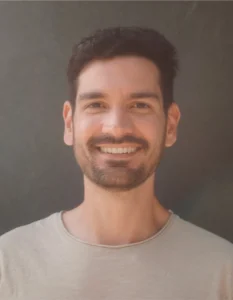
Design systems are great for maintaining consistency in products. The same principles can apply to how companies share information among teams.
One of the most common pain points startups face as they scale is the fragmentation of communication. Information becomes siloed, and the systems meant to keep things under control are insufficient at best and non-existent at worst.
In this session, we’ll look at simple examples of how to create systems that organise and share product decisions across teams. These examples will use tools commonly adopted by tech startups and scale-ups, but the underlying principles are tool-agnostic.
This talk will be especially useful for PMs, engineers, and designers at startups and scale-ups who have experienced firsthand the chaos companies face as they grow.
Takeaways:
- A tool-agnostic framework for tracking and sharing product decisions across teams
- Examples of practical design artifacts to inspire and enhance the framework’s impact
About Ed Orozco
Ed loves designing for B2B startups. He writes frequently about how design can make us more effective in our personal lives and at work. He won’t shut up about keyboard shortcuts.
Before you arrive
You don’t need to prepare anything for this session.
Themes
Real-life projects
UX design
UX writing
API or developer documentation
Good for
UX writers needing to make sure product documentation, marketing content and product copy are consistent, as well as anyone affected by shared product decisions.
Presentation: Driving documentation as an engineering practice

I joined a large software engineering company in 2021, when documentation had dropped very low in its engineering priorities.
I was asked to transform every aspect of its documentation: output and efforts, what it aims for, what it considers good, how it delivers it, how the organisation thinks about documentation’s purpose and value.
To do that, I needed hundreds of people to accept and internalise the values, standards and priorities that I saw. I needed documentation to be accepted, across the organisation, as a first-class engineering discipline.
Four years later, documentation is firmly established as an engineering priority and practice.
This isn’t the story of “How I…”. Rather, I want to offer the methods and approaches I used to make my problems everyone else’s problems, and drive documentation up the company’s agenda.
I think they will be useful for anyone – working at any scale – who needs some help in shifting the documentation priorities of a reluctant organisation that also has plenty of other competing priorities on its mind.
About Daniele Procida
I work at Canonical, the company behind Ubuntu, where I lead the company’s efforts to produce documentation for more than a hundred software products.
I’ve been working in documentation for as long as I have been working in software. I am the author of Diátaxis (https://diataxis.fr).
Before you arrive
You don’t need to prepare anything for this session.
Themes
Core activities
Real-life projects
Good for
Anyone working at scale who needs some help in shifting the documentation priorities of a reluctant organisation that also has plenty of other competing priorities on its mind.
Presentation: Content Planning in Action: How Structure Drives Consistency in Multi-Product Documentation
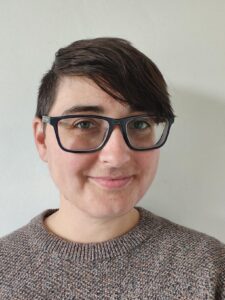
This talk will be a high-level overview of what a content creator needs to know to wrangle a large amount of content. Denise will describe a hypothetical company which is pulling together a collection of documentation from many different teams covering multiple products and in many different formats to create a unified help centre.
The presentation will be a guide to how documentation might be overhauled to ensure consistency across the unified doc set. The talk will be delivered in two parts: Content planning, and the restructuring process.
About Denise Marshall
With over 15 years of experience as a technical author, Denise Marshall (they/them) sees documentation as an act of teaching—an opportunity to guide, support, and empower every user who encounters it. They’ve built their career around explaining the complex with clarity and care, using tools like MadCap Flare, Markdown, Regex, and Git to craft content that makes a difference. They live for the moment that a confused user says, “Oh, THAT’s how it works!”
As a neurodivergent thinker and advocate of agile practices, they thrive in environments that value iteration, feedback, and continuous learning. Whether writing help content or navigating daily life with two young children, they apply the principles of agile—adaptability, collaboration, and incremental improvement—with intention and heart.
To them, technical communication is fundamentally human: it’s about meeting people where they are, offering guidance, and making things a little easier, one well-written sentence at a time.
Outside of work, they enjoy the creative pleasures of sewing and mending, the serenity of cycling, and the satisfaction of tinkering with technology.
Before you arrive
You don’t need to prepare anything for this session.
Themes
Core activities
Content strategy
Content operations
Content design
Information architecture
Inclusivity, equity, or accessibility
Good for
Anyone who’s faced with a large documentation set that needs to be restructured.
Presentation: ASD-S1000D – What is it, how is it managed

ASD-S1000D is an international specification for technical publications. In this presentation, Terry will walk the audience through the seven primary stages, demonstrating each process using live project documentation.
The presentation will culminate in demonstrating a published interactive electronic technical publication, including 3D animations linked directly to the XML procedural schema.
You will get an understanding of the key principles necessary to manage an S1000D project, including:
- analysing the project business rules
- selecting the Information code’s
- designing the data management requirements list
- originating the dataset
- validating the dataset
- publishing and deploying a fully built IETP
About Terry Howard
Terry has worked in the aerospace and defence domain as a technical communicator since retiring from the RAF 23 years previous. Terry is considered globally as an SME in ASD-S1000D. Employed at Babcock Mission Systems, Terry is the Technical Information Manager responsible for the Technical Communications discipline and overseeing the delivery of multiple defence programmes.
Babcock is developing a very capable in-house team of communicators which supply a global customer base for some of the most challenging defence programmes.
Before you arrive
You don’t need to prepare anything for this session.
Themes
Standards, safety, or regulations
Content operations
Good for
Any communicator who is interested to learn the process required to manage an ASD-S1000D project.
Discussion session: TCUK Rants
TCUK’s most famous, or should that be infamous, community session! Bringing together all attendees, this session provides a safe space to vent about something that nobody outside our lovely community would understand. If there’s something bothering you, just stand up and get it off your chest - you’ve got the floor for five minutes. If someone thinks they can help you with some advice, a product recommendation, or just a shoulder to sob on, they can approach you. TCUK Rants has traditionally made our community stronger and allowed us to forge the bonds a lot of technical communicators miss, especially if we are the sole representative of our profession where we work.
We encourage sponsors and business leaders to attend this session alongside technical communicators that may feel isolated. Listening to issues in the tech comms community can make your product or service stronger, and you might have something that can help.
By the end of this session you will:
- Feel better
Before you arrive
Make a note of anything that’s bothering you.
Themes
Any and all themes welcome.
Good for
Getting things off your chest
Supporting your community
Presentation: The Technical Writer’s Skill Tree

I want to explore the role of a technical writer – and how different it can be from one person or company to another. Having met many technical writers and worked as one for years, I’ve seen just how diverse the profession is.
I believe a technical writer’s skills can be visualised as a ‘skill tree’, much like in an RPG (Role Playing Game: a video game genre, often characterised by character development). Progression in one branch is often independent of the others, meaning each writer can shape their own path to success and even the goal. Some might focus on advancing linguistic skills, perfecting wordcraft. Others gravitate toward technical challenges – mastering documentation tools, automation, or deepening their subject-matter expertise. And some prefer to become well-rounded generalists, slowly developing skills across many areas.
To be most effective, I recommend building your own skill tree: assess your current strengths, decide what you want to “level up,” and chart your growth. This approach helps you understand what kind of technical writer you are, where you excel, and what you want to achieve next.
Armed with this clarity, you can work with greater confidence and apply your skills more effectively. It also shows how technical writers can remain competitive in the age of AI and LLMs – by cultivating a unique blend of skills across branches, combining responsibility, deep expertise, synergy, and autonomous decision-making in ways that machines can’t replicate (yet?).
About Vladimir Izmalkov
I am a Technical Writer with 15+ years of experience and a strong focus on the docs-as-code approach and UX-oriented documentation.
I work daily with Git, CI/CD, and developer workflows to create and maintain documentation alongside code. Skilled in static site generators, like Sphinx, Antora, and automation pipelines, I collaborate closely with engineers, DevOps, and SRE teams. My background includes cloud platforms (OpenStack, AWS, GCP), NoSQL databases (TypeDB, Tarantool), data processing products (Kafka, Spark) and SaaS, with experience in both hands-on writing and leading documentation teams.
I began my career in academia as a junior researcher before transitioning into technical writing. Since then, I’ve worked in both large enterprises and a high-tech startup, and my career has even taken me to the United Kingdom—where I relocated thanks to my work as a Technical Writer.
Before you arrive
You don’t need to prepare anything for this session.
Themes
Career progression
Transferrable skills
Trends in technical communication
Good for
Technical writers and those willing to become one.
Make TCUK25 your own! Our TCUK25 schedule includes slots that are available to book for fringe events, breakout sessions, or discussions.
To book a slot, find the room associated with the slot, and look for the timetable next to the door. Write your name and session into the slot on the timetable. If you would like your session mentioned in the morning welcome address, please find a member of the TCUK staff team and tell them.
I mean, we're going to have a knitting one, right?
Make TCUK25 your own! Our TCUK25 schedule includes slots that are available to book for fringe events, breakout sessions, or discussions.
To book a slot, find the room associated with the slot, and look for the timetable next to the door. Write your name and session into the slot on the timetable. If you would like your session mentioned in the morning welcome address, please find a member of the TCUK staff team and tell them.
I mean, we're going to have a knitting one, right?
Workshop: Let's Make a Video! - Creating Techcomm Video Content with Google Veo 3
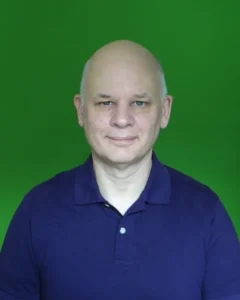
With YouTube Shorts reaching 2 billion monthly active users and the popularity of TikTok, short-form video is becoming another important channel for effective technical communication. This hands-on workshop will guide participants through the practical process of creating professional video content using the Google Veo 3 AI video generation tool.
We’ll explore how you can use it to create content for elearning, onboarding, and Developer Relations. Participants will leave with actual video content they’ve created during the session and an understanding of the workflow for ongoing video production in their technical communication roles.
Please note: During the workshop, delegates will sign up for a Google Veo 3 account. New users get 100 credits for free, but if they use up the credits and want to generate more videos, they will need to pay to get Google One, which costs around $20. Delegates can cancel their Veo 3 account after the workshop, so they aren’t billed in the following months.
About Ellis Pratt
Ellis is a Director at Cherryleaf. He has been working in technical communication since the early 1990s. He has a degree in Business Studies. He is also a Member of the Institute of Scientific and Technical Communicators (ISTC), an Associate of the Institution of Engineering and Technology, and he served as a judge for the UK Technical Communication Awards and the DevPortal Awards.
Before you arrive
Attendees will need:
- A laptop that can connect to wifi
- A Google account
Themes
Core activities
Trends in tech comms
AI in tech comms
Good for
Technical communicators ready to expand into video content creation.
Make TCUK25 your own! Our TCUK25 schedule includes slots that are available to book for fringe events, breakout sessions, or discussions.
To book a slot, find the room associated with the slot, and look for the timetable next to the door. Write your name and session into the slot on the timetable. If you would like your session mentioned in the morning welcome address, please find a member of the TCUK staff team and tell them.
I mean, we're going to have a knitting one, right?
-
RegistrationRegister for TCUK2508:30 - 09:30
-
Welcome from the TCUK25 teamGet the day started with any important information.09:30 - 09:50
-
Keynote: Surviving the savanna: Adapting to an evolving career landscapeRahel offers strategies for us to face the future with confidence.09:50 - 10:40
-
Break with refreshmentsTake a moment to stretch your legs and grab a drink or snack in the refreshments area10:40 - 11:00
-
Workshop: How to train your Dragon (chatbot)Create a chatbot with guidance and advice. (Two 40 minute sessions with a break).11:00 - 12:25
-
LunchBuffet-style lunch served in central area12:25 - 13:45
-
ISTC Annual General MeetingOpen to all to attend, but only ISTC members may vote.13:10 - 13:40
-
Presentation: Crowdsourcing insights into complex documentationHow to get productive documentation feedback via Slack.13:45 - 14:25
-
Presentation: The philosophy of technical communicationHow does your worldview frame your practice?14:30 - 15:10
-
Break with refreshmentsGrab coffee and cake in the refreshments area15:10 - 15:45
-
Presentation: Meta Design SystemsStandardizing and communicating product decisions to generate alignment and improve product consistency15:45 - 16:25
-
Presentation: Driving documentation as an engineering practiceLearn the methods and approaches used to drive documentation up the company's agenda.11:00 - 11:40
-
Presentation: How structure drives consistency in multi-product documentationUsing content planning and a restructuring process to wrangle content.11:45 - 12:25
-
Presentation: ASD-S1000D - What is it, how is it managedOverview of the international specification for technical publications S1000D.13:45 - 14:25
-
Discussion session: TCUK RantsBringing together all attendees, this session provides a safe space to vent about something that nobody outside our lovely community would understand.14:30 - 15:10
-
Presentation: The Technical Writer’s Skill TreeTake ownership of your own skill development.15:45 - 16:25
TCUK25 - Monday Evening
The drinks reception begins at 7 pm in the refreshments area with a nice glass of bubbly, or orange juice. The hotel bar will also be open for you to purchase anything else you fancy. Entertainment will be provided by Nasha Cash, an artist & illustrator who will be providing speed portraiture during the event.
Join us as we celebrate together with drinks, dinner, and a speed portait artist.
The dress code for this event is "dress to feel your best". We don't mind if that means full evening wear, or jeans and trainers. Whatever makes you feel happy, relaxed, and ready to party!
After dinner, keep your seats as we celebrate this year's winners of the UK Tech Comm Awards, then retire to chat the night away.
TCUK25 - Day 2 (Tuesday)
Register for TCUK25 at the desk then head through into the conference area. Don't forget to input your car registration for free parking.
The TCUK25 team will kick off the day with a welcome for everyone and any announcements.
Keynote: The European Accessibility Act is here to bite you in the arse (if it hasn’t already)
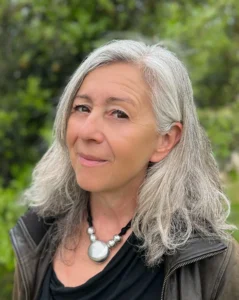
Who cares for accessibility? Do you care if people who’ve lost their eyesight, hearing, mobility, or balance struggle with your product when it’s still making money?
Sorry mate! I’ve got some bad news for you. The EAA is already in place this year – and that could spell trouble for you and your business if you don’t comply. Don’t believe me? You should. Lawsuits have already started, and they’re bound to increase. This talk will give you an overview of what the EAA might mean for your business. But even better: how being accessible can actually be a brilliant business decision.
Learnings:
- The practical consequences of the EAA for companies worldwide
- How being legally compliant does not mean being accessible
- The huge value of accessibility as a business opportunity
About Piccia Neri
Piccia Neri is on a mission to prove that inclusive design doesn’t kill profit, or creativity: in fact, it fuels both. As a UX and accessible design consultant and trainer, she leads and audits global projects for companies of all sizes. Piccia speaks at conferences worldwide, as part of her calling to educate designers, marketers, and developers to put accessibility at the heart of their work.
Piccia’s current main focus is on empowering companies to create systemic change, by training their teams to embed accessibility into the DNA of their products and services.
Before you arrive
You don’t need to prepare anything for this session.
Themes
Inclusivity, equity, or accessibility
Standards, safety, or regulations
Trends in technical communication
Good for
Anyone producing content for people, business, or both.
Take a moment to stretch your legs, use the facilities, or grab a drink or snack in the refreshments area.
Presentation: Automate All the Things? The Present and Future of Automation in Technical Writing (AI)

Many technical communicators use some degree of automation, even if they’re not aware of it. But what are they missing, and what comes next?
We will look at the present: what people are automating today. We’ll look at the current state of automation in technical communication, at different stages of the technical writing process.
We’ll cover some of the tools that can improve efficiency and consistency. This will include ones we use in-house, as well as others that we’ve seen used by other technical writing teams.
We’ll also look at the future: where automation is heading, and where the gaps remain. We’ll unpack emerging trends like Model Context Protocol (MCP) and other AI agents, using APIs, and considering the ways they could help technical communicators.
We’ll also address the important considerations that come with automation: the need for the human-in-the-loop, the impact of technical communicators and the organisation, and the potential pitfalls.
This session balances practical implementation guidance with strategic thinking about the future of our profession.
You will leave with a clear understanding of what’s possible today, what’s on the horizon, and how to make strategic decisions about automation in their own teams.
About Ellis Pratt
Ellis is a Director at Cherryleaf. He has been working in technical communication since the early 1990s. He has a degree in Business Studies. He is also a Member of the Institute of Scientific and Technical Communicators (ISTC), an Associate of the Institution of Engineering and Technology, and he served as a judge for the UK Technical Communication Awards and the DevPortal Awards.
Before you arrive
You don’t need to prepare anything for this session.
Themes
Core activities
Trends in technical communication
AI in tech comms
Good for
Anyone interested in the current state of automation or having to make strategic decisions about it.
Take time to refuel and chat with other attendees.
Workshop: Identify and control the risks of GenAI in your content ecosystem
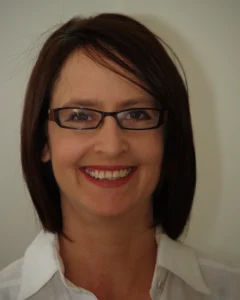
Generative AI promises efficiency gains, yet a single hallucinated fact or leaked prompt can trigger legal, reputational or security fallout. Many teams rush to publish “AI usage guidelines” first and patch risk treatment later. Or worse, risks are never properly identified or communicated at all. This talk gives a simple risk-management process to help you build a consensus within your team, and clearly communicate risks to leadership.
Drawing on ISO 31000 and other established risk management standards, the session walks through six practical steps with time for discussion in groups:
- Establish the context: define corporate risk appetite, map laws and regulations such as privacy and accessibility requirements, capture where GenAI touches existing content workflows, and build a shared glossary so Legal, IT and tech writers have a common understanding.
- Identify the risks: use cross-functional workshops and real use cases to identify risks in categories such as operational, compliance, security, reputational and strategic.
- Analyse the risks: score each hazard for likelihood and impact in a simple matrix; highlight the threats worth major investment.
- Evaluate the risks: decide whether to accept, mitigate or avoid.
- Treat the risks: select proportionate controls (such as RAG models, workflow gates, prompt-hygiene checklists, human-in-the-loop reviews, vendor assessments); link each control back to the risk register.
- Monitor and review: track error rates, re-work hours and team confidence, then iterate the framework as tools and regulations evolve.
You will receive two take-home files: a GenAI risk-register template and a brief guide for turning that register into a phased, evidence-based AI content policy.
You can then return to your team equipped to run calm conversations about GenAI content risks, and give leadership the information they need to align content risks with other organisational risks.
About Frances Gordon
Frances Gordon enables tech and service firms to reduce risk, cut complaints and earn trust through clear, ethical content.
As Director of Narratology and the UK Ambassador of PLAIN (Plain Language Association International), she helps regulated organisations implement:
- Plain-language programmes (ISO 24495-1-aligned)
- Gen-AI content policies that flag and treat AI-created risk
- Writing training so content and product teams keep quality in-house while using GenAI responsibly
Her 25-year track record in the UK, South Africa and Portugal spans content strategy, content design, UX writing and governance roles at Datatec, Barclaycard, Oradian, Backbase and Siegel & Gale. Before her current company, Narratology, Frances co-founded a South-African plain-language training practice.
She has spoken on financial inclusion, legal design and AI-enabled content at events such as PLAIN, Clarity, ConfabEU, UtterlyContent and World IA Day. She lectures a writing module at the University of Strasbourg’s Master’s programme in Technical Communication and Localization (TCLoc).
Before you arrive
You don’t need to prepare anything for this session.
Themes
Content operations
Content design
AI in tech comms
Good for
Any team now using LLM tools who need a way of clearly communicating risks internally and to their leadership teams.
Presentation: Docs-as-Code in a Small Team: Practical Lessons from the Trenches

For good reasons, Docs-as-code has been “the next big thing” for over a decade. It integrates documentation into engineering workflows, improves efficiency, and maintains quality. But how easy is it to implement, especially as a small team?
When tasked with documenting new SaaS products, I set out to adopt a docs-as-code approach. I trialled static site generators and initiated a book club with the dev team to read Docs Like Code by Anne Gentle, thus ensuring we shared a common language. The engineers, already building CI/CD pipelines, were eager to integrate documentation into their workflows and contribute alongside the code. Eventually we settled on using Docusaurus as our platform of choice.
With Git and Azure DevOps already in place, we were well-positioned to begin. In this talk, I’ll share what additional tools and processes we needed, including how we incorporated Mermaid diagrams and OpenAPI specs to enhance clarity and usability.
Was it the seamless solution that blog posts often promise? Not entirely, but it was transformative. This session will explore the practicalities, pitfalls, and payoffs of implementing docs-as-code in a small team and also offer insights for others considering the same path.
About David Jones
David has worked in technical documentation for over 30 years, writing and managing docs and other content for a range of software companies, most recently including Snyk, ServiceNow, Solifi, and NDS. He has written content for a wide range of software applications, from user guides to API docs, and has managed multiple teams over the past 15 years.
David is currently the Head of User Content at aPriori, where he manages a team of technical writers and trainers. He improves the aPriori learning and use experience through excellent documentation and training materials, and develops best-practice and best-of-breed content for information delivered to aPriori’s users.
David is implementing a collaborative content creation and management culture at aPriori. This includes aligning collateral, platforms, and people and using AI and automation to produce a scalable and automated user content culture.
Contact: https://www.linkedin.com/in/david-j-bailey01/
Before you arrive
You don’t need to prepare anything for this session.
Themes
API or developer documentation
Good for
Anybody thinking of implementing docs-as-code in a small organisation.
Take a break, grab coffee and cake, go for a walk, sit and talk - this time is yours!
Presentation: Gathering information for transformative content design: A how-to guide on As-Is and Information Needs

Whether improving existing documentation or creating anything new, it’s beneficial to plan beforehand, understand what’s missing, and gather all the information required while considering the user experience at every opportunity.
An As-is provides a visual way of examining the content’s current state as it currently is and early in the content development process, spot where the gaps are. With an Information Needs approach, we can capture broader considerations from users from multiple perspectives as we collaborate with subject matter experts to take note of what these users need to do and what they need to know.
With a more thorough investigation into what is required to satisfy the user journey, we can make more informed decisions for the design and development of new or to-be-improved content.
About Beth Morgan
Beth is a Technical Content developer at IBM, Hursley. She works primarily on the documentation for CICS TS, one of IBM’s major software products. As well as being responsible for the documentation for one of the core areas within CICS TS, she is the lead for the CICS TS docs feedback Slack channel, team accessibility focal, and acted as delivery lead for the documentation of the latest CICS TS release.
Beyond her main role, Beth is one of the new co-leads for the IBM Z Content Design & Development guild, working to bring together the hundreds of technical writers in the Z Content community for skill growth, opportunities for eminence, and building stronger connections.
Outside of work she enjoys reading and playing video games, switches between various crafty hobbies (sewing, knitting, painting – take your pick!), dabbles in photography, and partakes in regency dancing.
Before you arrive
You don’t need to prepare anything for this session.
Themes
Core activities
Content strategy
Transferable skills
User testing and research
Content design
Good for
Anybody looking to create fresh content or improve existing content.
Keynote: Is your documentation in plain language? How to evaluate it using the new ISO standard

Most teams say they “write clearly”. Fewer can prove it. This keynote explores how to evaluate whether a document is in plain language using the new plain-language standard, ISO 24495. You will learn the four governing principles and the checks that move you from opinion to evidence: do readers get what they need, can they find it, can they understand it, and can they use it.
ISO 24495 requires you to check whether documentation is usable and useful. It gives guidelines that take into account best practices in user testing and re-evaluations over time.
Frances will also touch on the draft standard for science writing (ISO/DIS 24495-3). It adds guidance and techniques to help writers make sure that readers or users of scientific information can understand and make use of what they read.
ISO 24495 has an ethical edge. It requires selecting content that serves readers’ purposes and contexts, and respecting their characteristics and needs.
You will leave with an overview of how to evaluate documents against an international standard, not a style preference. That helps you set quality bars, brief vendors, and defend decisions.
About Frances Gordon
Frances’ mission is to help organisations communicate in ways people can trust. She is UK Ambassador for Plain Language Association International (PLAIN), and serves on the British Standards Institution (BSI) committee for Language and Terminology, contributing as an expert to the plain-language standard. She also sits on the International Plain Language Federation's Localisation and Implementation Committee for ISO 24495.
At Narratology, she helps regulated organisations produce clear, accessible communications and draft generative AI content policies. Her clients include banks, fintechs and B2B SaaS firms. She has developed an AI-enabled assessment platform for plain language, and advises how to use technology to save time in evaluating plain language so that people can be freed up to play more strategic roles.
She lectures on plain language at the University of Strasbourg, and has spoken at numerous conferences about the intersection of accessibility, language, UX, brand, and financial and legal content.
Before you arrive
You don’t need to prepare anything for this session.
Themes
Standards
Trends in technical communication
Core activities
Good for
Staying current with industry standards, how to apply them, and the benefits of using them.
Presentation: Are we Webmasters? When Did That Happen?

Are we Webmasters?
Publishing to multiple exotic formats like PDF, WinHelp, or physical printing is now consigned to history. Most of us have standardized on Web HTML output, typically published on a website. So, from a user viewpoint, I now create and manage specialised Web content.
This matters because how we transmit and consume content matters – the medium is the message. Usability is key with Web content, more so than other formats. Also, we can do a lot more with Web content to communicate with our users, such as:
- Using Analytics instead of surveys, to identify outliers and guide our work.
- Connecting seamlessly to other resources like our corporate website, our code repos, and other functions.
- Making it easier to get feedback – for example “edit in place” functions like creating a GitHub PR for docs.
None of this is a shock, but it all impacts our roles as tech writers. We stop focusing purely on the content; we start focusing on making the content “rich.” We stop sending out user feedback surveys; we start using real-time analytics. We don’t ask readers to do the training; we embed video snippets in our docs (and track their use).
So our skillset changes. We need to know about SEO, site integrity and security, analytics, accessibility, and user experience standards. We should have at least some knowledge of XML, HTML and JavaScript. We should understand site generators, server-side scripts, and other technologies. And if we Google “Typical webmaster skills”…
So, we’re webmasters. What does this mean?
About David Bailey
David has worked in technical documentation for over 30 years, writing and managing docs and other content for a range of software companies, most recently including Snyk, ServiceNow, Solifi, and NDS. He has written content for a wide range of software applications, from user guides to API docs, and has managed multiple teams over the past 15 years.
David is currently the Head of User Content at aPriori, where he manages a team of technical writers and trainers. He improves the aPriori learning and use experience through excellent documentation and training materials, and develops best-practice and best-of-breed content for information delivered to aPriori’s users.
David is implementing a collaborative content creation and management culture at aPriori. This includes aligning collateral, platforms, and people and using AI and automation to produce a scalable and automated user content culture.
Before you arrive
You don’t need to prepare anything for this session.
Themes
Career progression
Trends in technical communication
Good for
Anyone writing documentation for delivery online. A very basic level of experience of web publishing and management functions will help.
This session is reserved as a period for attendees to have a chance to connect with each other. Perhaps you wanted to ask a speaker a question, or catch up with someone you haven't seen for a while. Maybe you'd like to connect with someone from a particular company or just reach out to fellow professionals and make new connections. Whatever your goals, here's your chance to make it happen!
Presentation: Leading and managing a cross-organisation, cross-location content team

Leading and managing a technical writing team can be difficult, but imagine a team that is across different organisations and stretched across the globe with differing content standards, procedures, and different timezones.
This session covers setting ways of working, the challenges faced and how to overcome them. Bethany will talk about using the differences of a technical writing team to create hybrid processes and ways of working, while creating a brand new technical content documentation collection.
About Bethany Simpson
Bethany is a technical content developer at IBM, Hursley. Bethany has been at IBM for 7 years, starting her IBM journey in mainframe testing and development, and moving to technical writing 4 years ago. She is the cross-organisational lead of technical content and content strategy for IBM z/OS Container Platform, whilst also owning other product documentation collections that are part of the ETS&anp;I portfolio.
Bethany focuses on the end-user and produces persona-led technical content, to ensure a great end-user experience. She is a core organiser of the Mainframerz meetup community, which increases external engagement with clients and partners that are interested in and working on the mainframe. Last year, Bethany was a merit award winner of the UK Technical Communication Award.
Before you arrive
You don’t need to prepare anything for this session.
Themes
Core activities
Content operations
Transferable skills
Real-life projects
Good for
Leaders of technical writing teams, and those who work in them.
Presentation: Fostering compliance in a regulated environment

Working at a regulated environment such as a bank, even in software, requires satisfying different areas of compliance. Different organisational structures ensure compliance with different areas of regulation, by mandating the existence of evidence, imposing checkpoints, and auditing projects and teams.
Coming from non-regulated software companies, my first realisation was that almost all “procedures” were in fact processes, which benefited from clear timelines that clarifiy the interactions and responsibilities of all the actors involved.
Some developers perceive these processes as overly bureaucratic and as barriers to real work being done. Therefore, they may explore loopholes and take shortcuts when possible. This is surprising in a regulated environment, where non-compliance may expose the bank to fines from the regulators and may result in swift disciplinary action against employees.
Developers that avoid official processes fail to make the connection between the bureaucratic steps they are required to follow and the hight-level regulations and guidelines they were taught to follow.
To make that connection explicit, I wrote two sections for each compliance area:
- Expected outcomes of that compliance area, as perceived by the bank and the regulators. This specifies the ultimate purpose of the bureaucratic processes.
- Principles that the bank wants to observe while pursuing the outcomes. These principles may prohibit some ways of working, or they may describe desirable ways of working.
The principles justify the existence of the bureaucratic processes as a way to achieve the desired outcomes.
For a certain area of the bank, reports feed auditing by describing how that area caters to a specific area of compliance. These reports now start with the expected outcomes and guidelines, followed by the processes in place. Some reports may also offer proof that the processes were performed successfully.
About Joaquim Baptista
Joaquim is the Principal Technical Writer at Millennium bcp. Joaquim has documented large and evolving software products that require industrial writing instead of just writing craftsmanship since 1997. Facilitation is an occasional need. Joaquim is a member of IEEE PCS and a leader at ISTC, APCOMTEC, and EuroSIGDOC.
Before you arrive
You don’t need to prepare anything for this session.
Themes
Core activities
Real-life projects
Good for
Anyone facing users that avoid following instructions, especially in a regulated environment.
Presentation: “Plough, through, rough, cough?” Why English spelling doesn’t play fair

Have you ever looked at a word written down and thought, "Isn’t that a weird spelling? Is it right? Why does it look so odd?"
In this presentation, I will take us on a journey through some of the quirks of the English language, and why it’s sometimes hard to spell words according to their sounds. I’ll give some reasons why it is the way it is, and explain the strategies needed to decode and encode correctly.
I will begin with some puzzling examples of English words and inconsistencies (hence the “plough, through, rough, cough” in the title).
I will then share data on how long it typically takes native English-speaking children to learn to read and write compared to children learning languages with shallow orthographic spelling systems.
I’ll then cover the Great Vowel Shift (GVS). I will explain the historical phenomenon that reshaped English pronunciation but left spelling behind. You’ll learn how the GVS contributed to mismatched spellings, homophones, and some of the irregularities that persist today.
Finally, I will explore a methodology for mastering English spelling by focusing on phoneme combinations, decoding patterns, and the exceptions.
By the end of this presentation, you’ll gain a fresh perspective on why English spelling is so inconsistent and hard to learn, uncover the fascinating historical quirks that shaped the language, and walk away with an appreciation for primary school teachers everywhere. Join me for an engaging and enlightening session!
About Jo Stichbury
Jo Stichbury is a Principal Technical Writer at QuantumBlack, AI by McKinsey, where she specialises in crafting clear, engaging documentation about data science and AI. Her career began in software development; she authored a book on Symbian C++ in 2004 and then gradually transitioned into full-time technical writing.
Having also trained to teach learners with literacy challenges, Jo is fascinated with the intricacies of the English language, and its often perplexing spelling and pronunciation “rules”.
Jo lives in Wales, so also has a daily challenge in pronouncing street and town names. Whether she’s writing about cutting-edge AI or unravelling the mysteries of encoding spoken sounds, she is passionate about making complex ideas accessible and meaningful to her audience.
Before you arrive
You don’t need to prepare anything for this session.
Themes
Information from another field
Good for
Anyone who loves the English language, enjoys crosswords or obscure facts about language, or has ever taught anyone how to read and spell!
Make TCUK25 your own! Our TCUK25 schedule includes slots that are available to book for fringe events, breakout sessions, or discussions.
To book a slot, find the room associated with the slot, and look for the timetable next to the door. Write your name and session into the slot on the timetable. If you would like your session mentioned in the morning welcome address, please find a member of the TCUK staff team and tell them.
I mean, we're going to have a knitting one, right?
Get trained by Piccia Neri!
Make the most out of your stay and sign up for live training on Accessible Data Visualisations with one of our keynote speakers. At just €50 (a little under £45), this is a rare opportunity to get world-class instruction at such an affordable rate.
About the workshop
Data visualisations sell stuff! You can’t publish a product comparison table, and expect to make money out of your product if 25% of the population – as well as search engines – can’t see it properly, or even at all.
In this 2-hour, practical, in-person live training, we will learn what it takes to make data visualisations truly accessible – and profitable – with words, graphics, colour, alternatives to colour, and also AI.
Click the link below for more details, including the two bonuses you’ll receive.
-
Sign-in or check-outRegistration for day-only ticket holders09:00 - 09:30
-
Welcome from the TCUK25 teamGet the day started with any important information.09:30 - 09:50
-
Keynote: The European Accessibility Act is here to bite you in the arse (if it hasn’t already)Stay safe, make good content, build your business.09:50 - 10:30
-
Break with refreshmentsTake a moment to stretch your legs and grab a drink or snack in the refreshments area10:30 - 11:00
-
Presentation: Automate All the Things?Gain a clear understanding of what's possible today and how to make strategic decisions about automation.11:00 - 11:40
-
LunchBuffet-style lunch served in central area11:40 - 13:00
-
Workshop: Identify and control the risks of GenAI in your content ecosystemGet a practical framework and guidance to create an actionable AI content policy.13:30 - 14:10
-
Presentation: Docs-as-Code in a Small TeamPractical Lessons from the Trenches14:15 - 14:55
-
Break with refreshmentsGrab coffee and cake in the refreshments area14:55 - 15:15
-
Presentation: Gathering information for transformative content designA how-to guide on As-Is and Information Needs15:15 - 15:55
-
Keynote: Is your documentation in plain language?How to evaluate it using the new ISO standard.16:00 - 16:40
-
TCUK25 Prize Draw and Closing16:40 - 17:10
-
Presentation: Are we Webmasters? When Did That Happen?See your work from another angle to better understand it.11:00 - 11:40
-
Networking sessionWant to talk to someone but keep missing them? Now's your chance.12:30 - 13:30
-
Presentation: Leading and managing a cross-organisation, cross-location content teamUse your differences to create a better way of working.13:30 - 14:10
-
Presentation: Fostering compliance in a regulated environmentLearn to motivate users by articulating the purpose of your instructions.14:15 - 14:55
-
Presentation: "Plough, through, rough, cough?"Why English spelling doesn’t play fair.15:15 - 15:55
